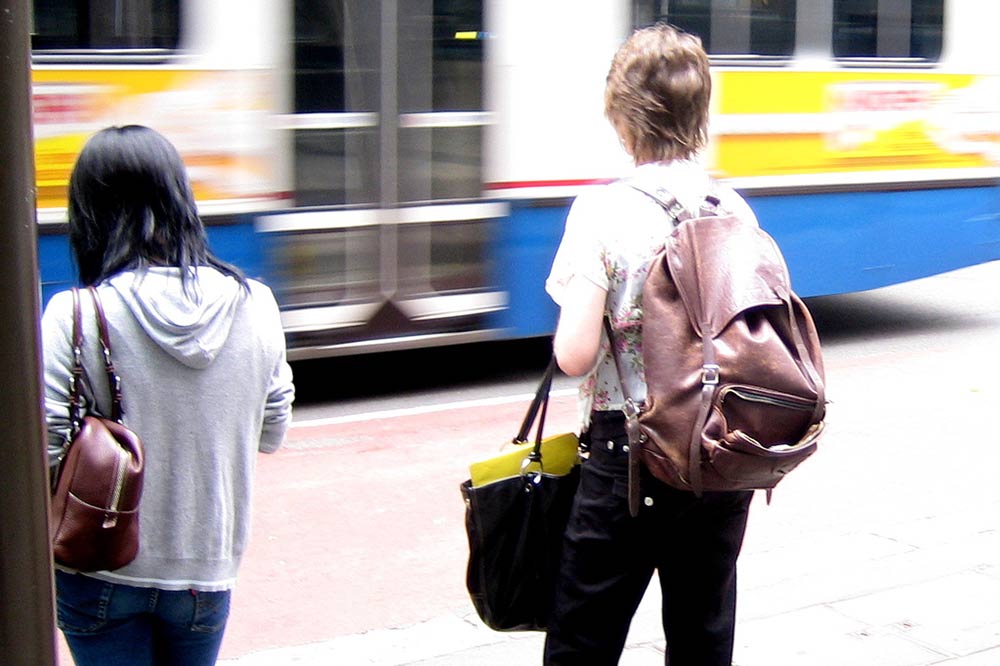
Image: James.
There have been many technological advances in public transport, including Opal cards and mobile apps, but the New South Wales government reckons something as simple as using all doors on a bus to load passengers will help ease the flow of commuter traffic.
The government conducted a two-week trial in Sydney’s CBD, which ran from 15th to 26th June 2015 that allowed commuters using Opal cards to use the middle and rear doors to board buses at the busiest stops.
Normally, these other doors are used to let passengers out, so there will need to be a similar honour system of common courtesy where the boarding passengers will need to stand back to let inbound passengers out.
As governments are becoming increasingly nervous about mounting congestion in urban and metropolitan areas and their ability to cope with growing populations, they are testing out any way possible to help in mitigating these problems.
Following the trial, the government will now consider whether using all doors of a bus to load passengers at all CBD locations should become common practice.
CBD Transport Coordinator General Marg Prendergast said the CBD is approaching a time of increased activity and significant disruption, so the government wants to ensure all parts of the network are operating as effectively as possible.
“The trial was conducted to see whether all-door loading under the supervision of marshals could reduce the time buses were waiting at stops without sacrificing safety for customers and other road users,” Ms Prendergast said.
She said as the trial was monitored, there were some “noticeable upsides” at those busy locations, “some of which we hadn’t anticipated”.
“One example was that while there were no buses at a stop, marshals were able to ensure cars and other vehicles didn’t block the bus stop areas,” Ms Prendergast said.






This is probably the incorrect forum. However, it is where I am and needing to express some thoughts, having been reading the various transport initiative documents.
Sydney’s Walking Future reads well. Unfortunately, given the information within other transport documents, it would appear that the objectives will forever remain a far off vision.
Pavements are reduced to allow greater room for cars, roads are developed to facilitate access within the city, all user friendly transport options are the last to be “thought of” and implemented.
I would have thought that the main objective to making Sydney, and the suburbs, a pedestrian friendly place, is to reduce the need of cars on the road. This would be done by streamlining the transport system, not building bits (Epping to Chatswood Line) at great expense then changing the mode, at further expense and disruption. Whilst improvements are being made, one does wonder t the wisdom of making The North West Rail Link metro instead of heavy rail. One also wonders why the proposed public transport interchange has to be so complicated and time consuming when other options were available….and even now be incorporated into the design.
Don’t narrow footpaths within the CBD. Keep them and their trees. Plant more trees.
Reduce the cost of using the Cross City Tunnel. In many cases, it is the cost that deters people.
Make all bus lanes 24 hrs, then people know their bus will arrive at their destination as planned. This includes the M2 which has intermittent bus lanes.
Park and ride facilities close to outer transport hubs. Make it easy to park your car and use the bus or train.
Build a true Sydney bypass, so that travellers and commercial vehicles do not need to use Pennant Hills Road to travel north. Extend the M7 west of Sydney to cross the Hawkesbury and reach Kariong away from suburban traffic. Not only would this facilitate faster traffic north, it would also reduce the impact that the tunnel under Pennant Hills Rd will most certainly cause. This also ensures that all traffic remains funnelled through the outer suburbs of Sydney.
I would strongly suggest that for anyone using an Opal card, that multi transport modes be priced as one.